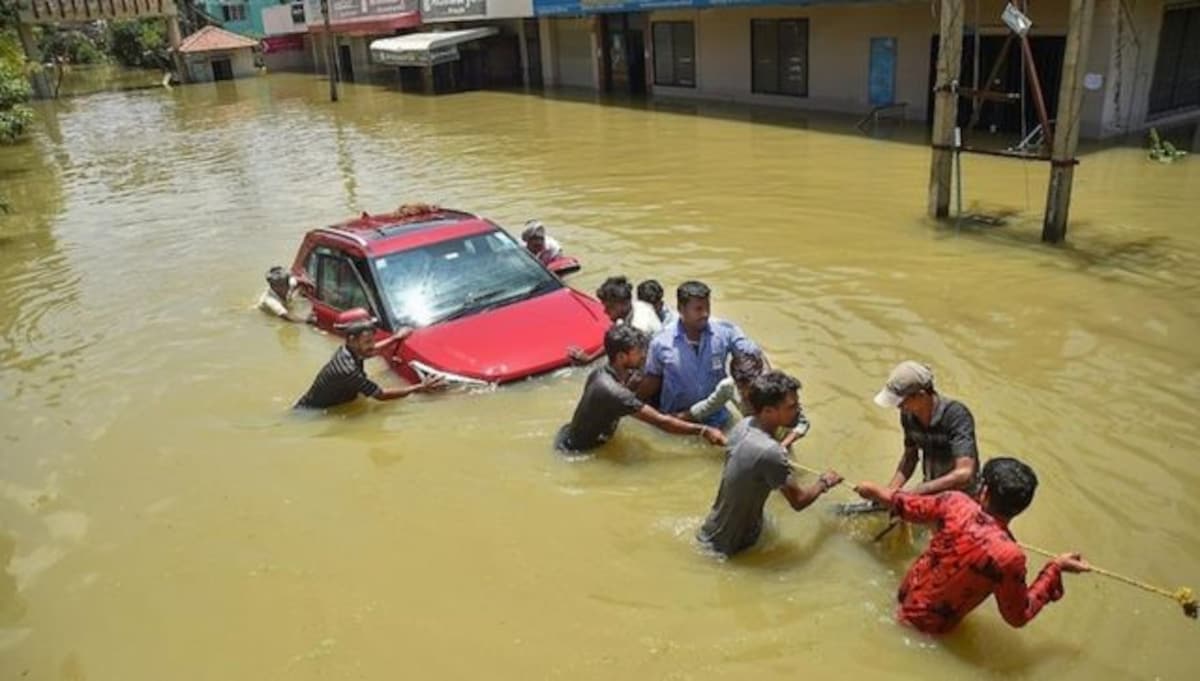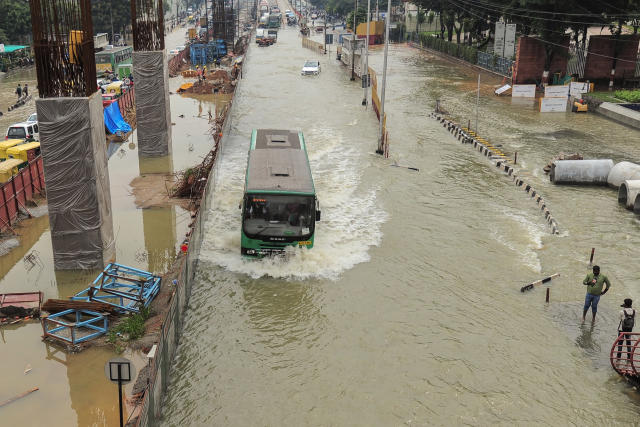Bengaluru Flood: India’s Silicon Valley Drowning in Heavy Rainfall

India’s tech capital is drowning in flood. Bengaluru has been hit by record rains. Water is entering homes, drains are overflowing, and schools have been closed. The roads are inundated, and life has almost come to a standstill. On the 5th of September, a woman in her twenties died in the city. She was waiting through a water-logged road, lost balance, and grabbed onto an electric pole. She lost her life then and there.
The city of 13 million people has come to a standstill. Unlike, what is happening in Africa, the problem here in Bengaluru is not just climate change. Bengaluru is called the Silicon Valley of India, where every big tech company has its office in this city. Professionals from companies like Amazon, Microsoft, TCS, and Mahindra today took a tractor to reach the office.
Affected areas in Bengaluru due to heavy rainfall
Bengaluru now looks like a city that is drowning in water. The Parking areas now look like a harbor. The waves are destroying every inch of the road and breaking into road dividers. The flood water has entered colonies. Government properties are affected too. India’s National Disaster Rescue Force is into performing its duties and evacuating from low-lying areas.
Most of the Education institutes have been closed. But this hasn’t eased the traffic condition. We all are aware of the traffic level of the city. Rain has only added to the misery. Heavy rain has also disturbed the supply of potable water.
How much rain has the city received? The authorities say Bengaluru has received its 2nd highest rainfall since 1971. On the 4th of September, 131.6 mm of rain fell on the Silicon Valley of India. The place has nearly 100 lakes. In the current scenario, all of them are overflowing and destroying the nearby area. No doubt that the rain has been surplus and that it is the main trigger for the flood. But, can climate change alone be blamed?

Reasons for the destruction in Bengaluru due to the rainfall
Those in power are pointing at unsustainable urbanization. Called the Silicon Valley of India, one can imagine the stress level of the city. As said earlier, Bengaluru is home to nearly 13 million people. The city is among the fastest-growing cities and individuals from renowned businesses live here. People come to this place for a bright and stable future. But, what if the city itself is drowning? Won’t the question be raised on the infrastructure of the place? In 1991, the land area of Bengaluru was 226 sq. km. In 2001, it grew to 710 sq. km.
In the next decade, the density expanded further. More global companies like Amazon opened their offices. Then came the start-up boom, which we all are witnessing. As expected, several companies have opened their offices, ultimately attracting more job seekers. The city had to build houses to accommodate the workers. Infrastructural facilities like schools, colleges, shopping malls, and hospitals were built. The construction was so speedy that the authorities ignored some of the crucial factors.
During the process of concretization, the surrounding and the environment was ignored. Flood-prone areas and wetlands were encroached upon. The Strom water drains became narrower and sewage pipe was obstructed. These factors piled upon leading to what we see in the city today. So, there were many factors responsible for the condition of Bengaluru. Blaming nature and climate change for the flood give a few minutes of relief to the administration. But one can’t run away from reality.

It was earlier easy to confuse the public and give the issue an unexpected turn. But now everything is crystal clear. The consequences of carelessness are now faced by the public and that can’t be ignored.
Bengaluru is a textbook example of field-urban planning. Today, it doesn’t take excessive rainfall to flood the city. Think about the confidence level of the public when they see the condition of one of the renowned cities of India. Think about the other cities. Isn’t it an alarming hour for the administration to seriously investigate the core issues?
Flood isn’t new for Bengaluru. The city flooded in 2021 and also the year before too. Rainfall disturbs the city everywhere and the government is still asleep. People are losing their lives due to the carelessness of the administration. flood due to heavy rainfall happens every year. Hopefully, this year’s destruction may force the city authorities and higher administration to sit down and make some serious planning to eradicate the chances of future disaster.
The nightmares are isn’t over. The metrological department of India has predicted heavy rain till the 9th of September. Everybody knows what that means and what it will end up doing. The city needs an army of dedicated individuals to rebuild it and the only solution is proper infrastructure and planning.




